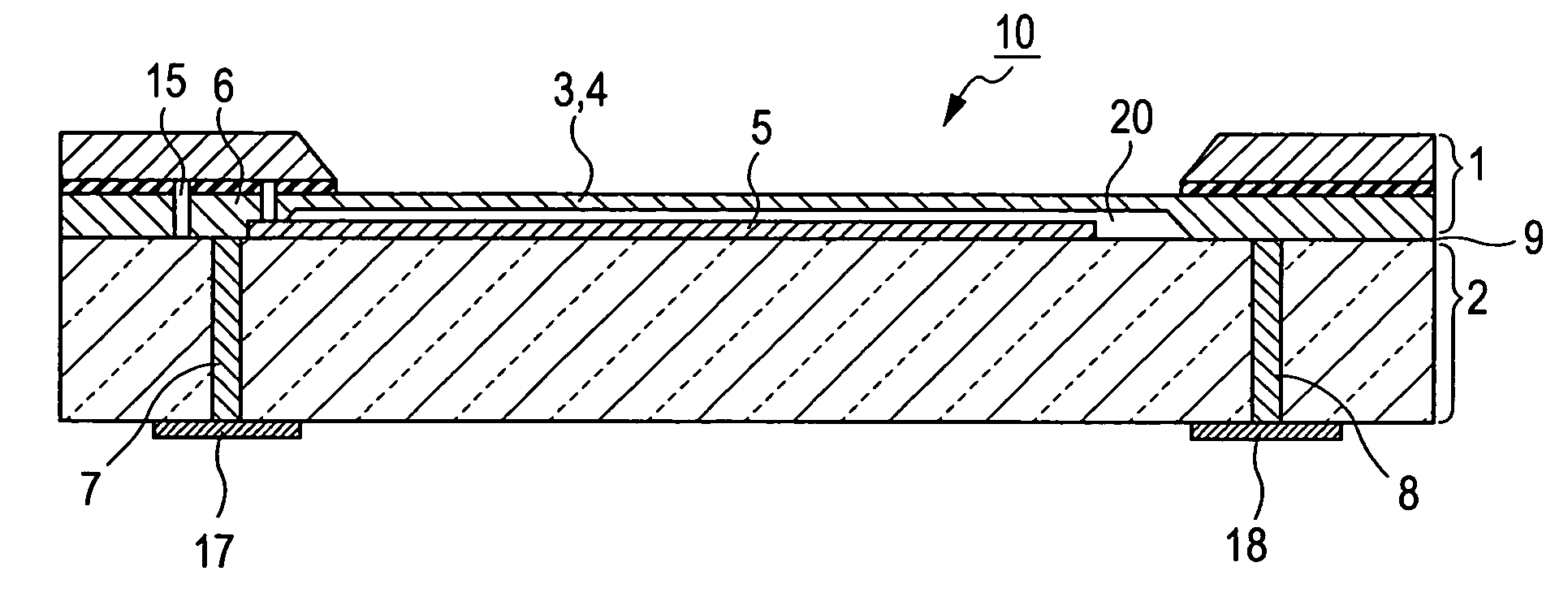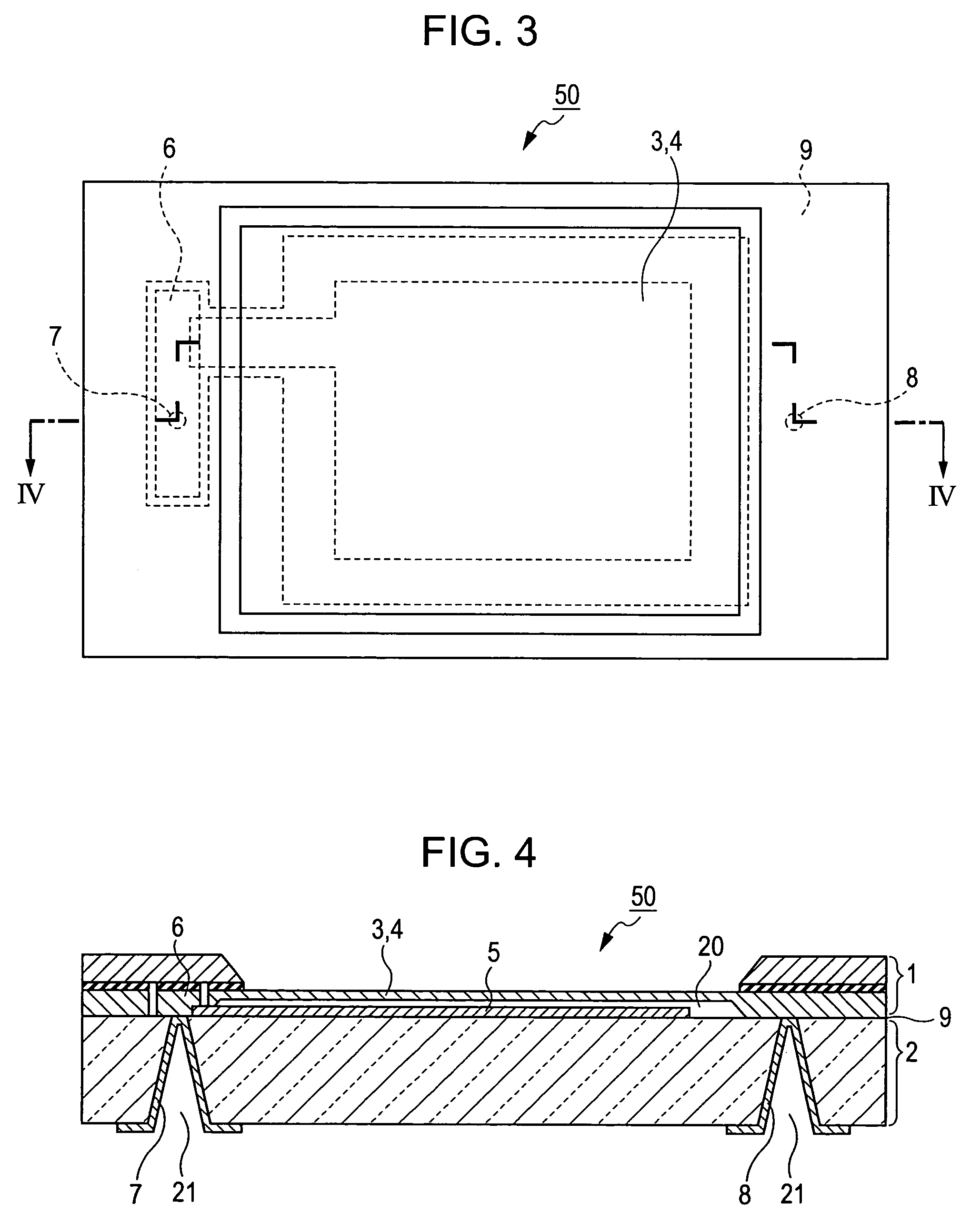Pressure sensor
a capacitive pressure sensor and capacitive technology, applied in the direction of variable capacitors, liquid/fluent solid measurement, instruments, etc., can solve the problems of unsuitable mass production, lack of long-term reliability, and resistance to higher pressures, and achieve long-term stable sealing effect, excellent mass productivity, and sufficient resistance to maintain sealing
- Summary
- Abstract
- Description
- Claims
- Application Information
AI Technical Summary
Benefits of technology
Problems solved by technology
Method used
Image
Examples
first embodiment
[0030][First Embodiment]
[0031]FIG. 1 is a plan view of a pressure sensor according to a first embodiment of the present invention. FIG. 2 is a sectional view, taken along line II—II, of the pressure sensor in FIG. 1.
[0032]In FIG. 1, a pressure-sensitive diaphragm portion 3 made of a silicon substrate is disposed in the center of a pressure sensor 10. A first electrode (diaphragm electrode) 4 is formed on the pressure-sensitive diaphragm portion 3, namely the silicon substrate. An output electrode 7 for a second electrode 5 (sensing electrode) and an output electrode 8 for the first electrode 4 are formed in a diagonal line with the pressure-sensitive diaphragm portion 3 disposed therebetween. A silicon island 6 is provided around the output electrode 7 for the second electrode 5. A silicon-on-insulator (SOI) substrate 1 and a glass substrate 2 are bonded, except for the pressure-sensitive diaphragm portion 3 and the silicon island 6, by a known method, namely anode bonding, so as to...
second embodiment
[0040][Second Embodiment]
[0041]FIG. 3 is a plan view of a pressure sensor according to a second embodiment of the present invention. FIG. 4 is a sectional view, taken along line IV—IV, of the pressure sensor in FIG. 3.
[0042]A pressure sensor 50 according to the second embodiment of the present invention in FIGS. 3 and 4 is different from the pressure sensor 10 according to the first embodiment of the present invention in FIGS. 1 and 2 in that the pressure-sensitive diaphragm portion 3 and the silicon island 6 are rectangular and that the output electrodes 7 and 8 formed in the glass substrate 2 are conical in cross section. No detailed description is given below because the structures and features of the individual parts are the same as those in the first embodiment.
[0043]The output electrodes 7 and 8 that are conical in cross section are advantageous in that deep through holes can be readily formed by sandblasting.
[0044]The pressure-sensitive diaphragm portion 3 may be circular or ...
PUM
| Property | Measurement | Unit |
|---|---|---|
| voltage | aaaaa | aaaaa |
| pressure | aaaaa | aaaaa |
| capacitance | aaaaa | aaaaa |
Abstract
Description
Claims
Application Information
 Login to View More
Login to View More - R&D
- Intellectual Property
- Life Sciences
- Materials
- Tech Scout
- Unparalleled Data Quality
- Higher Quality Content
- 60% Fewer Hallucinations
Browse by: Latest US Patents, China's latest patents, Technical Efficacy Thesaurus, Application Domain, Technology Topic, Popular Technical Reports.
© 2025 PatSnap. All rights reserved.Legal|Privacy policy|Modern Slavery Act Transparency Statement|Sitemap|About US| Contact US: help@patsnap.com



